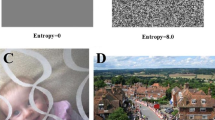Abstract
Brain is an expert in producing the same output from a particular set of inputs, even from a very noisy environment. In this article a model of neural circuit in the brain has been proposed which is composed of cyclic sub-circuits. A big loop has been defined to be consisting of a feed forward path from the sensory neurons to the highest processing area of the brain and feed back paths from that region back up to close to the same sensory neurons. It has been mathematically shown how some smaller cycles can amplify signal. A big loop processes information by contrast and amplify principle. How a pair of presynaptic and postsynaptic neurons can be identified by an exact synchronization detection method has also been mentioned. It has been assumed that the spike train coming out of a firing neuron encodes all the information produced by it as output. It is possible to extract this information over a period of time by Fourier transforms. The Fourier coefficients arranged in a vector form will uniquely represent the neural spike train over a period of time. The information emanating out of all the neurons in a given neural circuit over a period of time can be represented by a collection of points in a multidimensional vector space. This cluster of points represents the functional or behavioral form of the neural circuit. It has been proposed that a particular cluster of vectors as the representation of a new behavior is chosen by the brain interactively with respect to the memory stored in that circuit and the amount of emotion involved. It has been proposed that in this situation a Coulomb force like expression governs the dynamics of functioning of the circuit and stability of the system is reached at the minimum of all the minima of a potential function derived from the force like expression. The calculations have been done with respect to a pseudometric defined in a multidimensional vector space.


Similar content being viewed by others
References
Abbott LF and Regehr WG (2004) Synaptic computation. Nature 431:796–803
Bailey CH, Kandel ER (2004) Synaptic growth and the persistence of long-term memory: a molecular perspective. In: Gazzaniga MS (ed) The cognitive neuroscience III. MIT Press, Cambridge, MA, pp 647–663
Bousquet O, Elisseeff A (2002) Generalization and stability. J Mach Learn Res 2:499–526
Castro-Alamancos MA, Connors BW (1996) Short-term synaptic enhancement and long-term potentiation in neocortex. Proc Natl Acad Sci 93:1335–1339
Ekstrom AD, Kahana MJ, Caplan JB, Fields TA, Isham EA, Newman EL, Fried I (2003) Cellular networks underlying human spatial navigation. Nature 425:184–187
Engel AK, Fries P, Singer W (2001) Dynamic predictions: oscillations and synchrony in top-down processing. Nat Rev Neurosci 2:704–716
French AS, Holdon AV (1971) Alias-free sampling of neuronal spike trains. Biol Cybern 8:165–171
Goldstein H (1950) Classical mechanics. Publishing Co. Inc., USA, Addison-Wesley
Harris-Warrick RM, Marder E (1991) Modulation of neural networks for behavior. Annu Rev Neurosci 14:39–57
Kandel ER (1976) Cellular basis of behavior: an introduction to behavioral neurobiology. W. H. Freeman and Co., San Francisco
Kandel ER (2001) The molecular biology of memory storage: a dialogue between genes and synapses. Science 294:1030–1038
Kandel ER (2006) In search of memory: the emergence of a new science of mind. W.W. Norton & Co, New York
Kandel ER, Schwartz JH, Jessell TM (2000) Principles of neural science. McGraw Hill, New York
Kentros C (2006) Hippocampal place cells: the “where” of episodic memory. Hippocampus 16:743–754
Lange GD, Hartline PH (1979) Fourier analysis of spike train data. Biol Cybern 34:31–34
Majumdar K (2006a) Detection of phase synchronization between two firing neurons by fast Fourier transform. http://arxiv.org/ftp/q-bio/papers/0612/0612004.pdf. Cited 4 Dec 2006
Majumdar K (2006b) A new measure of phase synchronization for a pair of time series and seizure focus localization. http://arxiv.org/ftp/nlin/papers/0612/0612032.pdf. Cited 13 Dec 2006
Majumdar K (2007a) Behavioral response to strong aversive stimuli: a neurodynamical model (submitted to Cognitive Neurodynamics. http://arxiv.org/ftp/arxiv/papers/0704/0704.0648.pdf. Cited 4 Apr 2007
Majumdar K (2007b) A novel architecture for cortical computation, under preparation, aimed for cogprint archive and Neural Networks.
Majumdar KK, Kozma R (2006) Studies on sparse array cortical modeling and memory cognition duality. Proc. IJCNN’06, Vancouver, Canada, pp 4954–4957
Maldonado PE, Friedman-Hill S, Gray CM (2000) Dynamics of striate cortical activity in the alert macaque: II. Fast time scale synchronization. Cereb Cortex 10:1117–1131
Poggio T, Rifkin R, Mukherjee S, Niyogi P (2004) General conditions for predictivity in learning theory. Nature 428:419–422
Reich DS, Victor JD, Knight BW, Ozaki T, Kaplan E (1997) Response variability and timing precision of neuronal spike trains in vivo. J Neurophysiol 77:2836–2841
Schild D (1982) An efficient method for the Fourier transform of a neuronal spike train. Int J Neurosci 17:179–182
Tass P, Rosenblum MG, Weule J, Kurths J, Pikovsky A, Volkmann J, Schnitzler A, Freund H-J (1998) Detection of n:m phase locking from noisy data: application to magnetoencephalography. Phys Rev Lett 81:3291–3294
Vapnik VN (1995) The nature of statistical learning theory. Springer, New York
Vretbald A (2003) Fourier analysis and its applications. Springer, New York
Acknowledgements
The author likes to acknowledge the Institute of Mathematical Sciences for a postdoctoral fellowship under which this work has been carried out. Helpful comments by three anonymous reviewers are also being acknowledged. One of them pointed out the works of E. R. Caianiello and coworkers with which my developments may have some similarities. Unfortunately I could not access any material on their works at the time of reviewing this article.
Author information
Authors and Affiliations
Corresponding author
Rights and permissions
About this article
Cite this article
Majumdar, K.K. A structural and a functional aspect of stable information processing by the brain. Cogn Neurodyn 1, 295–303 (2007). https://doi.org/10.1007/s11571-007-9022-0
Received:
Accepted:
Published:
Issue Date:
DOI: https://doi.org/10.1007/s11571-007-9022-0




